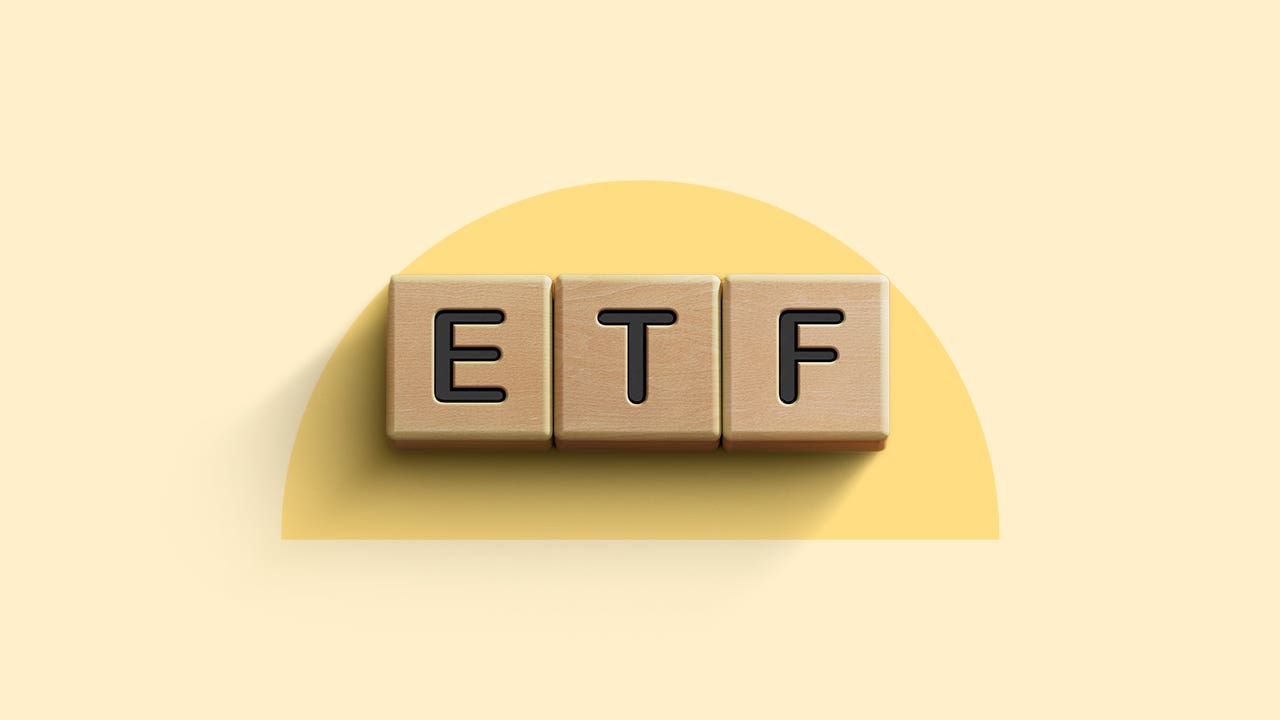Best dividend ETFs and how to invest in them

For public companies, one of the simplest ways to communicate financial stability to shareholders is through cash dividend payments. The most established companies often share a portion of their profits with investors, rewarding them with cash dividends. For investors, dividends provide a steady stream of passive income.
Here are some of the best dividend ETFs on the market, including their yield and key holdings.
Dividend ETFs: What to know before investing in one
Owning dividend-paying companies through exchange-traded funds (ETFs) can be highly efficient. A dividend ETF is a fund that invests exclusively in dividend-paying companies. Fund managers select these companies based on specific attributes such as size, industry, geographic region and dividend history.
Once you select a dividend investment style, every holding in that ETF will have a similar profile.
For example, suppose you choose a fund that invests only in large-cap companies with a history of consistently paying dividends. In that case, a fund manager typically cannot deviate from that investment strategy. This principle is important, as the investment style you choose will determine the varying degrees of risk and the potential returns.
For retail investors, ETFs are convenient because they provide instant diversification at a low cost. This added benefit makes dividend ETFs appealing to novice investors because picking stocks requires a certain level of investment knowledge.
Top dividend ETFs
Below are some of the most widely held dividend ETFs on the market. (Data as of Oct. 15, 2024)
Vanguard Dividend Appreciation ETF (VIG)
VIG tracks the performance of the NASDAQ U.S. Dividend Achievers Select Index. The investment strategy focuses on dividend growth, selecting companies that have consistently increased dividend payments for at least a decade.
- Fund’s dividend yield: 1.7 percent
- Top holdings: Microsoft (MSFT), Apple (AAPL), Broadcom (AVGO)
- Expense ratio: 0.06 percent
- Assets under management: ~$86.6 billion
Vanguard High Dividend Yield ETF (VYM)
VYM tracks the performance of the FTSE High Dividend Yield Index. The index selects high-yield dividend-paying companies based in the U.S., excluding real estate investment trusts (REITs).
- Fund’s dividend yield: 2.8 percent
- Top holdings: Exxon Mobil (XOM), JPMorgan Chase (JPM), Johnson & Johnson (JNJ), Broadcom (AVGO)
- Expense ratio: 0.06 percent
- Assets under management: ~$59.4 billion
Schwab US Dividend Equity ETF (SCHD)
SCHD seeks to track the performance of the Dow Jones U.S. Dividend 100 Index, which includes companies with strong financial performance. The low-cost fund holds companies based on the quality and sustainability of their dividends and consists of many household names.
- Fund’s dividend yield: 3.5 percent
- Top holdings: The Home Depot (HD), BlackRock (BLK), Cisco System (CSCO), Chevron (CVX)
- Expense ratio: 0.06 percent
- Assets under management: ~$63.4 billion
SPDR S&P Dividend ETF (SDY)
SDY tracks the performance of the S&P High Yield Dividend Aristocrats Index. The index screens for companies that have consistently increased dividend payments for at least 20 consecutive years.
- Fund’s dividend yield: 2.3 percent
- Top holdings: Realty Income (O), Kenvue (KVUE), International Business Machines (IBM)
- Expense ratio: 0.35 percent
- Assets under management: ~$21.7 billion
iShares Select Dividend ETF (DVY)
DVY tracks the performance of the Dow Jones Select Dividend Index. The index selects high-dividend yield companies — about 100 of them — based in the United States.
- Fund’s dividend yield: 3.5 percent
- Top holdings: Altria Group (MO), AT&T (T), Philip Morris International (PM), Citizens Financial Group (CFG)
- Expense ratio: 0.38 percent
- Assets under management: ~$20.3 billion
ProShares S&P 500 Dividend Aristocrats ETF (NOBL)
NOBL tracks the performance of the S&P 500 Dividend Aristocrats Index. The index screens for multinational household names with a history of increasing dividends for at least 25 years, with some of them doing so for more than 40 years.
- Fund’s dividend yield: 2.0 percent
- Top holdings: International Business Machines (IBM), Stanley Black & Decker (SWK), Air Products & Chemicals (APD), McDonald’s (MCD)
- Expense ratio: 0.35 percent
- Assets under management: ~$12.7 billion
How dividends work
Dividend payments are usually issued to shareholders every quarter, although in some cases companies may issue special dividends that act as a one-time bonus. To be entitled to an upcoming dividend, a shareholder must own a company’s stock up to and including what’s known as the ex-dividend date.
Investors pay particular attention to the dividend yield, highlighting how much a company or fund pays in relation to its stock price. Dividend yields are calculated by taking the annual dividend payment and dividing it by the share price. The yield is shown as a percentage. Yields may be calculated based upon payments made over the last year or payments expected to be made over the coming year.
For example, if a company’s annual dividend payment is $4 and the share price is $100, you would see a dividend yield of 4 percent with a quarterly distribution of $1.
To be sure, a high yield doesn’t always mean a solid investment opportunity. Indeed, many investors view the highest yields as a red flag that a company’s shares might have taken a hit, causing yields to rise. A very high yield could also be a sign that investors think the company will cut its dividend payment in the near future.
As a rule, be sure to look at a company’s entire financial picture before investing. A dividend payment is just the icing on the cake.
How to invest in dividend ETFs
A solid dividend strategy can be a key component of an investor’s portfolio. Since the 1940s, dividends contribution to the S&P 500’s total returns averaged about 34 percent, according to research by Hartford Funds. And when dividends are reinvested, the returns are even higher, accounting for 85 percent of the S&P’s cumulative total returns since 1960.
Inherently, dividend investing tends to be less risky. Companies in a position to issue regular payments are often more cash-rich than those trying to rapidly grow their businesses. Well-established names such as a group called the Dividend Aristocrats also have a history of boosting their dividend payouts every year and take a lot of pride in doing so.
When choosing dividend ETFs, here are four steps to consider:
- Determine your financial goals: The type of investments you choose depends on what you are trying to achieve. For example, someone about to retire will likely have a more conservative approach to investing. So always let your financial objectives drive your decision-making.
- Research dividend funds: When selecting dividend ETFs, pay attention to factors like dividend history, dividend yield, the fund’s performance, expense ratios, top holdings and assets under management. Investors can find this information in a fund’s prospectus.
- Outline your asset mix: Before investing, do an inventory of what you own and how you want to allocate your assets. Remember, the key is to remain diversified.
- Know what you own: By periodically reviewing your investments, you can take charge of your finances and make any adjustments needed. Leverage any free resources from your broker, like meeting with a financial planner, and always ask questions. Ultimately, there’s no such thing as a hands-off investment.
Like any other investment, a dividend ETF is susceptible to losses. The magnitude of potential losses is tied to the level of risk in the portfolio. So a fund that invests heavily in potentially riskier assets like companies in emerging markets will have a very different risk profile than a fund that invests in established, tried-and-true names. Macroeconomic factors like the interest rate environment also play a factor.
Are dividend ETFs a good investment for you?
An investment approach focused on dividends can make sense for many people at different stages of their investing lives:
- Dividends can be a great way to build wealth over time, as growing companies distribute earnings to their shareholders.
- Dividends also make sense for those looking to generate income from their investments, such as those who have reached retirement age.
Always think about your investment goals and consider whether dividend ETFs can help you achieve them. It can be advantageous to work with a broker that allows dividend reinvestment into partial shares, getting your cash compounding faster.
What to look for in a dividend ETF
Here are some things to consider when choosing a dividend ETF:
- Fees
- You’ll want to understand the ETF’s expense ratio before making an investment. Some ETFs have very low fees, while others can run higher and eat into your returns.
- Yield
- Pay attention to a dividend ETF’s yield to understand what kind of income you can expect to earn over the next year. Remember that future dividends aren’t guaranteed, but a yield will give you an idea of what to expect.
- Track record of returns
- While you’re looking at the yield, also examine the fund’s performance over time. It makes little sense to find a nice yield but then to lose overall wealth in a fund that declines year after year.
- Portfolio makeup
- Keep an eye on the fund’s holdings and see if it has a lot of exposure to certain companies or industries. If a fund has significant exposure to one industry, you likely won’t get the diversification benefits offered by other funds.
How are dividends taxed?
Depending on the type of investment account you own, dividend distributions are taxed as regular income or at a reduced rate under special considerations. These rules only apply for holdings outside tax-advantaged accounts like a 401(k) or an IRA, where you won’t pay taxes on dividends or capital gains.
Bottom line
History shows that dividends have been a significant source of income for investors. When consistent dividend payments and rising stock values are combined, they can be a powerful wealth-building tool. Dividend ETFs give you the opportunity to invest in multiple companies at once, offering more diversification than individual stocks. They can be a good way to reap healthy dividend payments from established companies, and add income to your portfolio.
Editorial Disclaimer: All investors are advised to conduct their own independent research into investment strategies before making an investment decision. In addition, investors are advised that past investment product performance is no guarantee of future price appreciation.
You may also like









